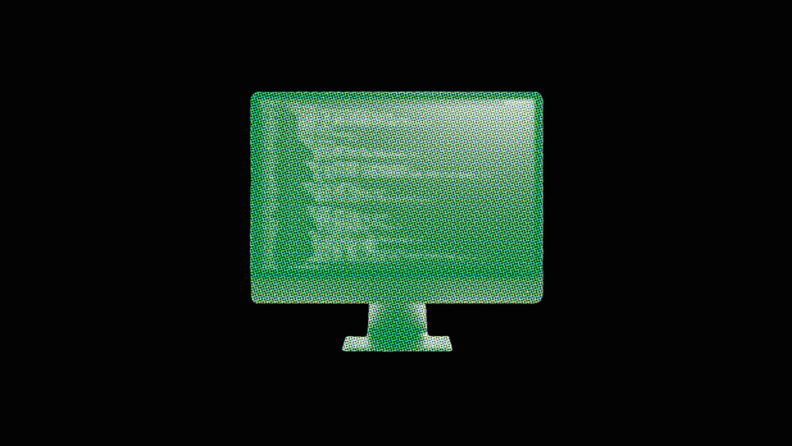Preparation is Key: Before diving into accounting software, there's a checklist of preliminary steps to complete, ensuring the solution is tailored and ready for business-specific needs.
Bookkeeping, Tax Filing, and Financial Planning: Once your system is set up, you should use your accounting software to simplify and automate your routine processes.
Process Optimization, Data Storage & Security, and Audit Management: After you've nailed the basics, you can use the software to improve business-wide processes, compliance, and security.
Ah, accounting software: the digital abacus for modern businesses. Although, to be fair, software can do more than just crunch numbers and hoard your receipts.
In case you’re new to using accounting systems, I’ve created a comprehensive guide to teach you how to use these tools, from initial set-up all the way through to system verification.
If you're switching from a different accounting tool, you'll follow a slightly different process.
Before You Begin Using Your Accounting Software
…you’ll need to check a few things off your accounting software to-do list. It’ll differ a bit from business to business, but here are a few general steps that need to be taken care of before any accounting solution is ready to use:
1. Choose your Accounting Software
Finding an accounting software is like finding a needle in a haystack, but more painful because the whole stack is made up of needles (a needlestack?).
Choosing the right one is all about drilling down on your requirements and budget. Using that information, you can select an accounting software whose features and pricing match your requirements. Several vendors offer free trials or free accounting software demos to help you trial the solution before you purchase.
Best Accounting Software Options
If you haven’t chosen a system yet, consider these options. Our tech team has analyzed hundreds of accounting software tools, and these are the ones that rose to the top:
2. Install the Accounting Software
This is usually a bit more straightforward compared to the previous step — just follow the instructions provided by the setup wizard and use our implementation checklist to calibrate your system.
3. Create Your Company Profile
Here, enter your company details, address, and employee information. These will be used while preparing your taxes, so ensure they match your legal documents.
If other employees in your accounting department are going to be using the software, you can also define user permissions in this step.
Starting to Use Your Accounting Software
Most software fails because of poor planning during implementation — and accounting software is no different. Poor implementation and policies can affect the data quality, ease of use, and customer security.
Here are a few things business owners should keep an eye on during implementation to give your accounting software the best chance for success.
1. Configure Your Chart of Accounts
A chart of accounts is a detailed report that categorizes your transactions by type.
First, start by assigning transactions to one of five core accounts:
- Assets
- Liabilities
- Equity
- Revenue
- Expenses
Each one can have sub-categories that reflect your business nuances. For example, ecommerce businesses can have a sub-category under Inventory Management called “shipping fee” while SaaS businesses will have entries like “maintenance.”
Grouping transactions like this makes tracking expenses, entering transactions, and reporting finances easier. Moreover, you can ensure your accounting entries match standards set by the International Financial Accounting Standards Board (IFRS) and Generally Accepted Accounting Principles (GAAP).
2. Input Opening Balances
Opening balances are your initial accounting reports detailing the company’s financial health before using the accounting platform.
Start by compiling all your outstanding invoices, bank statements, accounts payable, accounts receivable, and closing balances — everything your new accounting system needs to represent your business’s finances accurately. Next, create a plan to migrate your accounting data safely. Most accounting platforms help with migrating your data to the new system. Leveraging this service will make the implementation process much easier.
Once your opening balances are set, you’ll have a clear picture of your business with a reliable baseline for categorizing and analyzing future transactions.
3. Connect Bank Accounts
Businesses will usually have multiple bank accounts — one for expenses, one for payments, and so on. Syncing your bank accounts to your accounting system makes tracking your transactions across multiple accounts easier. Most accounting software supports this functionality by default, just follow the instructions to authenticate and sync your accounts.
7 Ways to Use Accounting Software Like an Expert
Now you’re ready, it’s time to use your accounting software to crunch some numbers. How you use accounting software will depend on your business type and requirements.
For example, small business owners may need simple accounting software to track sales revenue, while larger businesses will need more advanced capabilities like CRM integration.
To start, let’s look at a few basic use cases of accounting software:
#1 Simplify Routine Bookkeeping
To start, accounting software should allow accountants to streamline day-to-day accounting tasks — like a project management tool, but for accounting.
Without simplified accounting processes, you risk data entry mistakes and poor financial planning, especially as accounting requirements for your small business grow.
You can use accounting software to:
- Process invoices: You can automate invoice generation and delivery by linking the software to your POS system. Each time a sale is made, it generates an invoice and updates your Chart of Accounts to reflect the transaction. It minimizes data entry errors and streamlines your accounting tasks.
- Track expenses and income statements: By linking your bank accounts, the software can group transactions under the right account automatically. Automating bank reconciliations saves CFAs from the time-consuming task of analyzing spreadsheets. Instead, they can focus on financial planning, leaving financial record management to the software.
Wave is a great example of accounting software seamlessly incorporating invoicing and expense tracking under one roof. Its easy-to-use software connects with unlimited bank accounts, making it ideal for SMBs and nonprofit organizations. This way, you can consolidate information from all business functions, making it easier to access and analyze.
#2 Streamline Tax Filing
Maintaining accurate financial records makes filing your taxes easier. However, businesses usually have multiple sources of income that are processed via different bank accounts, credit cards, and payment gateways. Compiling this information in a single location makes preparing your tax return forms easier.
Accounting software offers a centralized database of all your financial statements — everything you need for a hassle-free tax season. Moreover, information will be in the required format, minimizing tax filing mistakes.
While choosing your accounting workhorse, ensure it adheres to local regulations and exemptions. It’ll ensure you get the tax benefits you are entitled to without breaking any laws.
#3 Plan Your Financial Future
Financial planning provides a roadmap to using the lifeblood of your business — your money. It helps you make data-driven decisions around budgeting, resource allocation, and business growth. However, creating a foolproof plan requires detailed cash flows, profit and loss statements, balance sheets, cost-benefit analyses, etc.
Business accounting software can automatically create real-time financial reports, saving tons of time during the forecasting process. Also, since the process is automated, you don’t have to worry about data entry errors — the accounting solution takes care of them while reconciling entries.
These reports can be imported into native or third-party financial planning tools for further analysis. For example, you can gain deeper insights into:
- Your customers by analyzing payment patterns, defaulters, and seasonal trends.
- Your financial health by studying performance across stores, products, and employees.
This is exactly how FOTENN used their Quickbooks Online subscription. The company needed more robust accounting features to create insightful financial reports — which its current subscription didn’t support. By upgrading to an enterprise-level subscription, it was able to create multiple reports within minutes, leaving management more time to focus on decision-making.
Apart from basic accounting tasks, you can also use accounting software for more advanced functions across the business, like:
#4 Optimize Business Processes
Business functions work hand in hand. Every time a sale is completed, your inventory system is updated to show one less item in stock. However, since data is stored separately, you won’t understand the full impact of sales on inventory and vice versa.
Accounting software gathers information on every transaction completed across business functions. Including inventory, sales, customer service, and so on. It offers insights into your business functions from a financial point of view that isn’t limited to just how profitable a department is.
The data can be used to improve business operation efficiency, identify market trends, and even detect fraudulent financial activities. It offers a way to adapt to customer requirements while managing financial risk.
#5 Secure Your Financial Data
In 2023, the financial services sector had the second most cases of data breaches in the U.S. Without proper data security protocols, you risk valuable customer and business data falling into the hands of hackers.
The best accounting software uses robust data security features like encryption, access controls, and backup systems. It protects sensitive financial information from falling into the wrong hands. Moreover, showcasing your commitment to protecting client data helps build the customer’s trust.

#6 Manage Your Documents
As your business grows, you’re looking at more transactions, invoices, expense reports, and budgets. Maintaining these documents is vital for filing taxes, conducting audits, and measuring your financial health.
Accounting tools are a great way to organize all your financial transaction data in one place for future reference. They have filters and search options to find documents from a specific period, so you don’t have to spend hours looking through digital or physical files.
#7 Conduct Audits
Finally, using accounting software, you can access detailed financial reports that make auditing easier. Since all your invoices and transactions are accounted for on the system, auditors and offshore accounting services can easily cross-reference the validity of transactions.
This way you can verify the reliability of your financial transactions, minimize fraud, and improve stakeholder accountability. When audit season comes around, you have everything you need ready at your disposal, in the required format.
Subscribe For More Accounting Tips & Tricks
Running a business is a numbers game. Every penny earned and every penny spent needs to be tracked to file your taxes, measure your performance, and plan for the future.
Advanced accounting software provides the tools needed to accurately and efficiently track your financial data, from invoices to tax exemptions. Meanwhile, it also offers additional benefits like:
- Secure storage for your financial data
- Tools for financial planning
- Integrations to meet your business requirements
But this is just the start of your accounting journey. Looking for the best accounts payable software to level up? Need tips on building the best accounting team? Subscribe to our free newsletter for expert advice, guides, and insights on accounting software and its capabilities.



